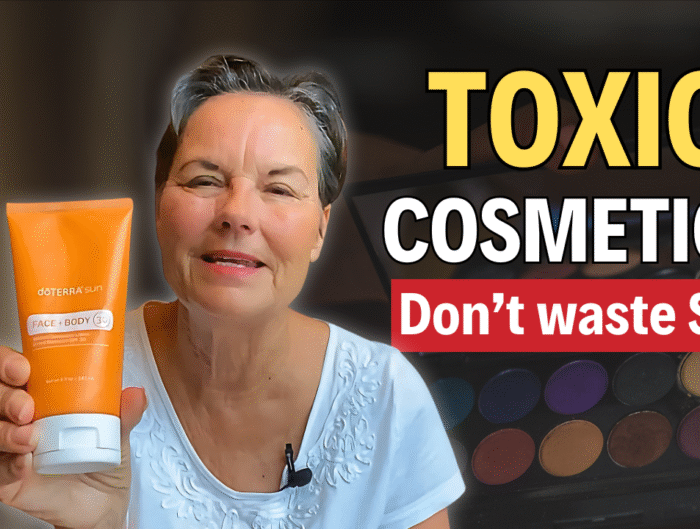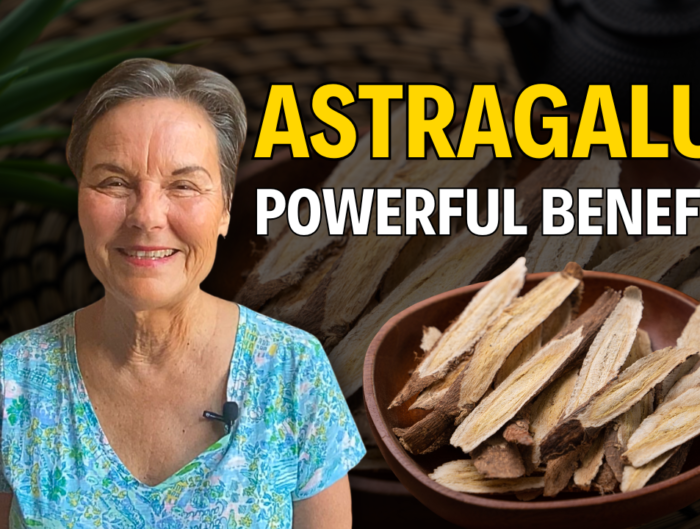In previous videos and blog posts, I’ve informed you about the dangers of plastics, the types of plastics, and how to reduce plastics in your life. Then one day, I realized there was a plastic lurking before me that I’d completely overlooked. I used to avoid recipes that involve lots of cutting and chopping, but now that I know the amazing benefits of the phytochemicals, antioxidants, and fiber in these chopped plants, I’m now chopping, and cutting more than ever before.
As I looked at what I was chopping, It hit me. I’m using a plastic chopping board to dice these fruits and vegetables. Is this releasing microplastics into my food and in the air? Is this overlooked kitchen utensil proven to release microplastics? So that investigative researcher drove me to the research and this is what I found out about plastic cutting boards and which boards are the safest to use.
Microplastics are tiny plastic pieces less than 5 mm in size that can take hundreds or thousands of years to decompose. Meanwhile, they’re polluting the environment — having been found in the air, water, and soil. You can’t see them, but they can be seen through a microscope. Today with new detection methods, microplastics have been found in our lungs, in our blood, and in almost every part of our bodies. Yes, these microplastics are contaminating our bodies.
According to recent research in 2023, the commonly used plastic cutting board may pose a major health hazard. A peer-reviewed study published in the journal Environmental Science & Technology found that plastic cutting boards may lead to significant amounts of microplastic in our food. This study found that chopping vegetables and other items on both polyethylene and polypropylene plastic boards releases microplastics that can cling to our foods. An earlier study in 2022 found that chopping meat on plastic boards releases microplastics into them.
Then I wondered, how many microplastics are released when I use my plastic chopping board? A study at the University of North Dakota found that cutting carrots on a plastic board can generate as much as 15 milligrams of microplastics per cut which could accumulate to 50 grams per year. That’s significant. The amounts vary, depending on the cutting style of the cook, the sharpness of the knife, and the type of food being cut.
This 2023 study found that using a plastic cutting board can create between 1,536 and 7,680 small flecks of plastic, which can get onto your knife and into your food. These microplastics are easily ingested due to their microscopic size, and according to research, that they can accumulate within the human body.
Well, that was the straw that caused me to ditch my convenient plastic cutting board and search for the best cutting board to buy.
In the study done in North Dakota in 2023, the scientist conducting the study, Himani Yadav, used wooden boards as her control group and both types of plastic, polypropylene and polyethelene. She said:
“We estimate the release of 1 to 14 microplastics per cut from polyethylene cutting boards and 3 to 15 microplastics per cut from polypropylene. Our study assumes that the average person makes 500 cuts per day on a board, or over the course of a year, 128,000 cuts. Given those numbers, the cumulative microplastics exposure ranges from 7.4 to 50.7 grams per year.”
So let’s look at the safest materials to cut on:
- Wood
Obviously wood is one of the safest materials to cut on that’s why is was used as the control in this study. Plastics are not released from wood. The wood in the cutting board should be made from hardwood (not softwood) such as pecan, walnut, cherry, acacia, teak, or maple. With solid wood, the cutting surface has antimicrobial properties from the tannin in the wood that makes them more resistant to bacterial growth. Also, make sure your board is not treated with toxic sealers or synthetic oils. Some wood boards are made more for decoration and display than for cutting.
- Bamboo
Bamboo is a sustainable, fast-growing grass that is harder than many hardwoods. The bamboo boards are nonporous and less likely to absorb moisture thus lessening the growth of bacteria and risk of cross-contamination. But maintenance of both wooden and bamboo cutting boards is key. They should be washed in hot water with soap and occasionally treated with oil to prevent cracks and drying. It’s best to avoid the bamboo boards made from engineered board which uses formaldehyde as glue. These boards used bamboo strips glued together—not a good idea.
- Glass, stone or ceramic
Glass and stone cutting surfaces also are nonporous and have antibacterial properties. They are also easy to clean. But realize that whether you use wood or glass or stone, it’s best to use different boards for fruit and vegetables as opposed to meats, etc. to avoid cross-contamination. And talk about long lasting. These boards can be put in the dishwasher. One caution though, some stones such as marble can chip or crack and of course, glass can break when dropped. And I have the dropsies!
- Titanium or stainless steel
I’ve never seen these before, but they are just hitting the market and would not be releasing microplastics or any toxins into your food.
Well, after my research, guess which cutting board I bought after deciding to not use my plastic board anymore? I went with wood -not just any wood – but acacia wood. It arrived last week. And not very expensive, too.
No more cutting and chopping and releasing microplastics into my food. What was I thinking. Actually, I had a brain lapse. I was teaching others about reducing plastic use while using the most obvious plastic on a weekly basis. No more.
View this message on YouTube:
The Overlooked Kitchen Utensil Proven to Release Microplastics
Related Videos:
Eight Simple Tips to Reduce Plastic Use
Unexpected Ways Plastics Enter Our Bodies
The Dangers of Plastics: It’s More Than Just Marine Life
Know Your Plastics to Protect Your Health
For Your Health,
Ginny
 Ginny Dent Brant is a speaker and writer who grew up in the halls of power in Washington, DC. She has battled cancer, ministered around the world, and served on the front lines of American culture as a counselor, educator, wellness advocate, and adjunct professor. Brant’s award-winning book, Finding True Freedom: From the White House to the World, was endorsed by Chuck Colson and featured in many TV and media interviews. Unleash Your God-Given Healing: Eight Steps to Prevent and Survive Cancer was released in May 2020 after her journey with cancer and was recently awarded the First Place Golden Scrolls Award for Memoirs, a finalist in Serious Writers Book of the Decade, and Second Place in both Selah Awards for Memoirs and Director’s Choice Award for Nonfiction at the Blue Ridge Mountain Christian Writer’s Conference. It recently received the Christian Authors Network’s (CAN) Gold Award for Excellence in Marketing for reaching 62.5 million people with a message of cancer prevention and survival. It was written with commentary from an oncologist and was featured on CBN’s Healthy Living Show, Atlanta Live, and CTN’s Homekeepers along with over 75 media outlets. Learn more and cancer and wellness prevention blog and book information at www.ginnybrant.com. Ginny is on YouTube
Ginny Dent Brant is a speaker and writer who grew up in the halls of power in Washington, DC. She has battled cancer, ministered around the world, and served on the front lines of American culture as a counselor, educator, wellness advocate, and adjunct professor. Brant’s award-winning book, Finding True Freedom: From the White House to the World, was endorsed by Chuck Colson and featured in many TV and media interviews. Unleash Your God-Given Healing: Eight Steps to Prevent and Survive Cancer was released in May 2020 after her journey with cancer and was recently awarded the First Place Golden Scrolls Award for Memoirs, a finalist in Serious Writers Book of the Decade, and Second Place in both Selah Awards for Memoirs and Director’s Choice Award for Nonfiction at the Blue Ridge Mountain Christian Writer’s Conference. It recently received the Christian Authors Network’s (CAN) Gold Award for Excellence in Marketing for reaching 62.5 million people with a message of cancer prevention and survival. It was written with commentary from an oncologist and was featured on CBN’s Healthy Living Show, Atlanta Live, and CTN’s Homekeepers along with over 75 media outlets. Learn more and cancer and wellness prevention blog and book information at www.ginnybrant.com. Ginny is on YouTube
Link to buy book at Unleash Your God-given Healing
Click to sign up to take Conquering Cancer Course
Ginny is a cancer coach. Make an appointment to meet with her:




